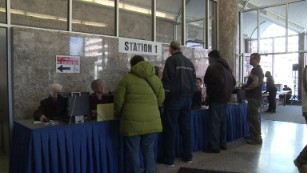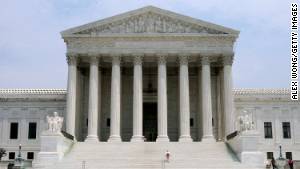Supreme Court upholds Ohio voter rolls decision

Supreme Court upholds Ohio voter rolls decision
The Supreme Court on Monday upheld Ohio’s aggressive efforts to purge its voting rolls.

WASHINGTON – JUNE 25: The exterior view of the U.S. Supreme Court is seen June 25, 2007 in Washington, DC. The Supreme Court has ruled to give more freedom for interest groups and unions to run TV ads before elections, and also ruled to limit taxpayers’ rights to challenge government initiatives as unconstitutionally promoting religion. (Photo by Alex Wong/Getty Images)
Supreme Court upholds Ohio voter rolls decision
(CNN) To strengthen our democracy, we should promote inclusive elections where we remove unnecessary hurdles and make it easy to vote.
Unfortunately, five members of the Supreme Court do not seem to agree with this sentiment. In upholding, by a 5-4 vote, Ohio’s practice of purging its voter rolls, the conservative members of the Court showed that they care more about protecting state authority over elections than the individual, fundamental right to vote.
The dispute revolves around Ohio’s process for removing voters from the voter rolls based on a failure to vote in previous elections. The state mails a notice to anyone who does not vote in two consecutive years, seemingly to see if the person still resides at that address. If the person does not respond and fails to vote or update their registration during the next four years, the state removes that person from the voter registration list. Once removed, the individual cannot vote unless he or she re-registers at least 30 days before the next election.
Ostensibly, the point of this process is to ward off voter fraud, though Ohio has not had major integrity problems with its elections. To be sure, Ohio’s voter rolls may be somewhat out of date — as people move and die all the time — but inaccurate voter rolls do not automatically lead to voter fraud. On the other hand, Ohio’s voter purge process effectively disenfranchises thousands of eligible voters.
Yet Justice Samuel Alito, writing for the majority, showed which side of this debate enjoys the conservative justices’ credence. He began his majority opinion upholding Ohio’s law by focusing on outdated voter rolls, not the disenfranchising effect of the law. He noted that “about one in eight” voter registrations in the United States are “invalid” or “significantly inaccurate,” citing a study from 2012. But he failed to indicate whether any of these inaccuracies lead to any actual voter fraud or any other integrity problems in our elections. And he did not mention the number of people who simply cannot vote because of this process. To learn more go to the link below:

